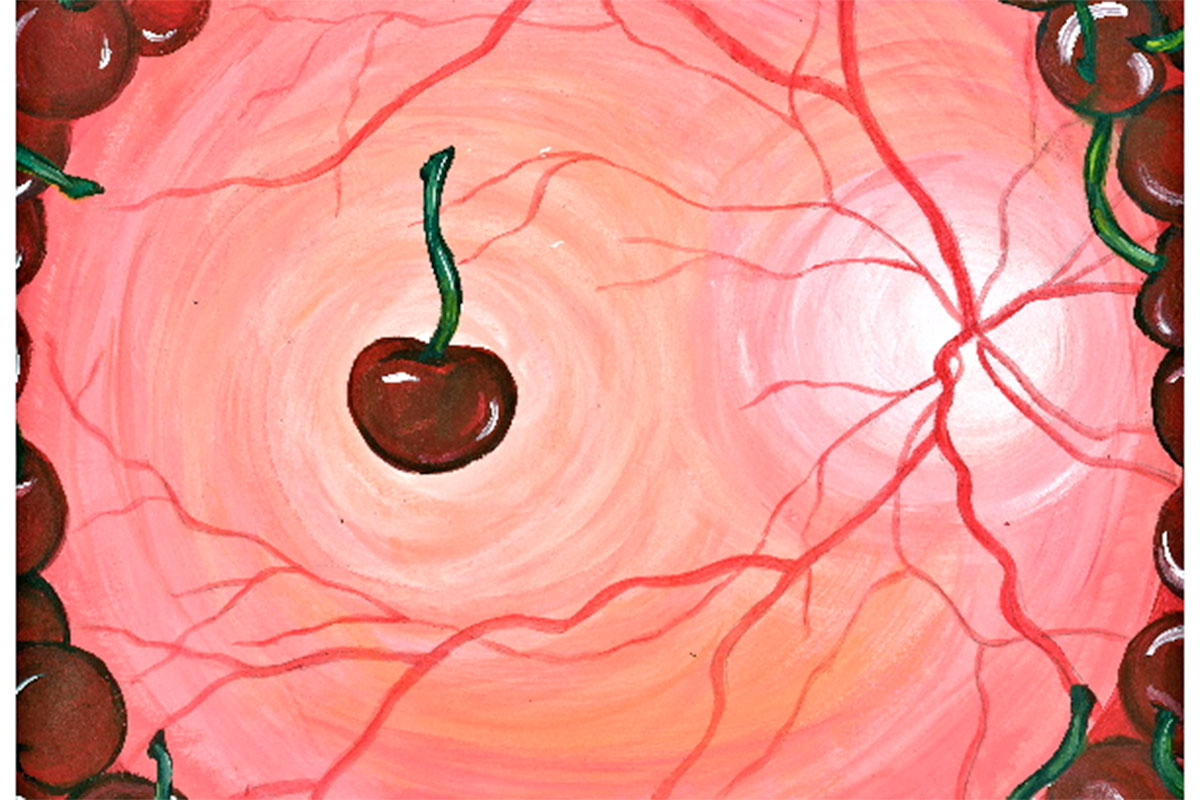Food-Related Medical Terms Help Doctors Identify Disease Symptoms

“strawberry tongue” is used to describe a bright red tongue with prominent papillae seen in conditions such as scarlet fever. image created by lisa kipersztok and provided to bostonmagazine.com.
Pancake brain. Prune belly. Hot cross bun head. These phrases might sound like the kind of mean-spirited monikers you’d expect from a playground bully, but they’re actually common terms used by some of the most educated people in our society: doctors.
Food-related terms like these help aspiring and practicing health professionals memorize and identify symptoms of medical conditions, according to a new review article published by Tufts University researchers in the Malta Medical Journal. “Pancake brain,” for example, refers to the shape of the brain observed in examinations of patients with a birth defect known as alobar holoprosencephaly. “Hot cross bun head” refers to the bun-like shape of the skull of a patient with congenital syphilis, according to the review.
Lisa Kipersztok, a fourth-year medical student at Tufts and the article’s co-author, says that although the terms are used by doctors across different fields and specialties, they can be especially beneficial for students like her.
“They help us remember what signs and symptoms look like, smell like, or feel like. They help us create ‘pathognomotic’ or classic scenarios that we could encounter in clinic or in the hospital,” she says. “Medical school is all about memorization, and comparing medical findings to food has been incredibly helpful for me along the way.”
The article explores the use of nearly 40 of these food-related medical terms, though Kipersztok says there are hundreds more of them. Some of her personal favorites include “cherry hemangioma,” which describes a red skin growth common in adults over age 30, and “garlic breath,” which refers to the breath odor of a patient with arsenic poisoning.
Kipersztok says she took an interest in these terms after noticing that searching for them while studying for the first part of the medical board exam helped her stay focused and learn more. “I told a few friends, and soon enough the whole class knew about my collection. Classmates and professors started emailing me contributions. Now that I am rotating in hospitals as a ‘working’ medical student, I ask for common food related terms on every rotation,” she says. “My list is now over 300 terms long.”

“cherry-red spot” describes the appearance of the layer of blood vessels and connective tissue in the eye between the sclera and retina on a fundoscopy . photo provided.


